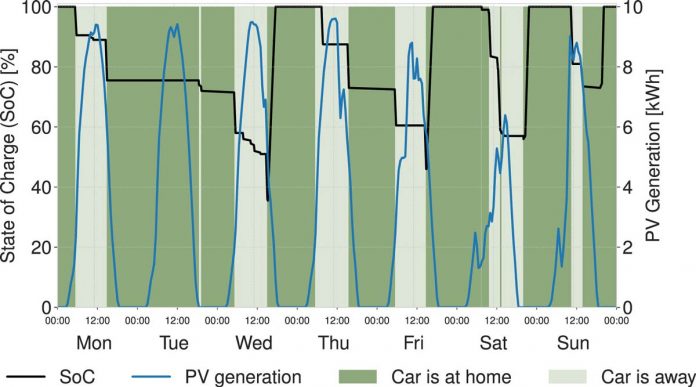ETH research team have done their research on a vehicle charged through a home photovoltaic system. Photovoltaics (PV) is very popular now. In Switzerland it covers 5 percent of the country’s electricity consumption. Electromobility have 70,000 pure electric vehicles in Switzerland. 200,000 hybrids are also there.
Solar power and e-mobility are a perfect match
A research team brought together the growth of photovoltaics and electromobility in their experiment. The scientists wanted to know till what extent electric car owners can charge their vehicles with power from their own photovoltaics system. But some people are criticizing the concept of charging with PV power.
Real user data, virtual PV generation
The new research has focused on 78 electric mobility users. These users lived in a single-family home and use their vehicles during the day. The scientists recorded their behaviour for ten months. The ETH researchers get to know when the electric cars were driven and when they are being charged. “SBB Green Class” project has contributed the user data. Under this project, individuals bought a mobility package which have a GA travelcard and an electric car. This also contained a private charging station.
The buyers charged their vehicles in their home charging station. The scientists needed to monitor the homes of 78 electric vehicle owners with a hypothetical PV system. They have also reconstructed the available roof area with geospatial data. They have covered it virtually with solar panels. The scientists used historical weather data with a 30-minute resolution. Then they calculated the potential solar power yield. They have considered factors such as shade from neighbouring buildings and trees.
High level of private consumption thanks to intelligent control
This model calculation has helped the ETH researchers to know how much PV power was available to the owner. They thought that users will use the power to charge their vehicles only. 11 kilowatts (kW) were the maximum charging power. The PV systems had power of 5 to 25 kW. This power is enough to charge the car at full power in sunshine.
There were four different charging strategies. Scientists calculated proportion of household PV power needed to charge the electric cars where any change in user mobility behaviour is not required. First time they were charged at the same time as previously. The result of the experiment was sobering. 15 percent of electricity requirements per year was met by PV power.
In the second strategy, simple intelligent control made sure that the battery was charged whenever household PV power was available. This experiment had a different result. Here, more than half of electricity requirements was met with household PV power where temporary storage was not even needed.
Algorithms for smart charging
Electric vehicles can even be charged with household PV power up to 90 percent of the time when potential of intelligent control is consistently exploited. The vehicles can be driven almost exclusively using solar energy when the PV power is buffered in a storage unit.
Scientists are ambivalent about intermediate storage. The household consumption of green PV power can be increased a little bit. As the sustainability balance of the charging system affected by the production of electricity storage units causes relevant quantities of CO2.

